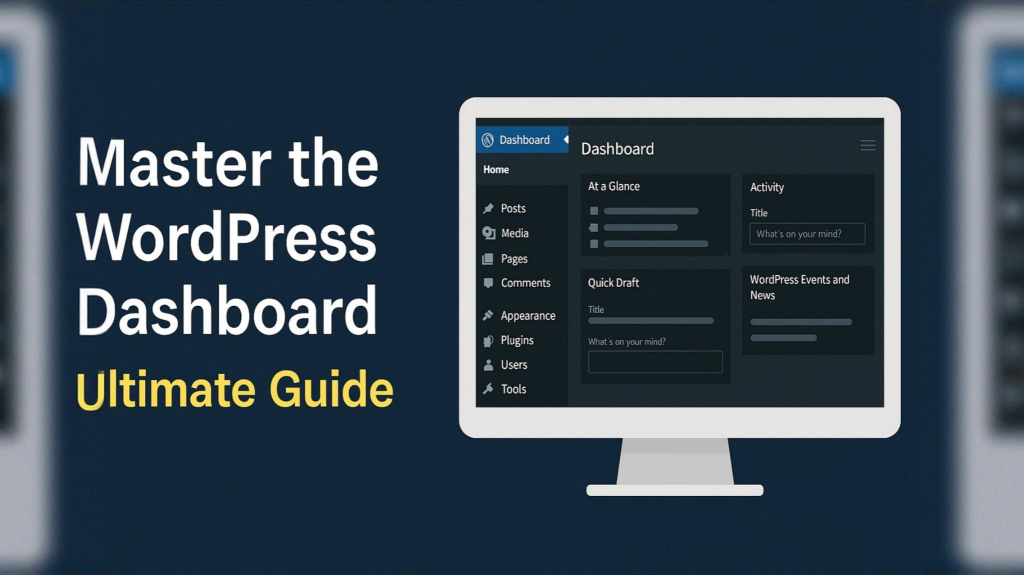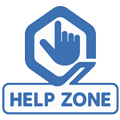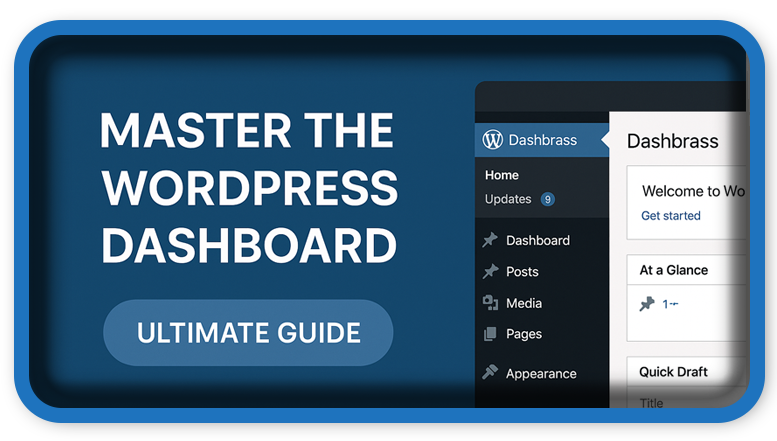⏲️ Estimated reading time: 5 min
Master the WordPress Dashboard – Ultimate Guide
Ready to take control of your WordPress website? This ultimate guide walks you through every section of the WordPress dashboard from creating posts to managing plugins so you can build, optimize, and grow your site like a pro.
Dashboard Ultimate Guide
Whether you’re a beginner or just looking to sharpen your WordPress skills, understanding the dashboard is key to managing your website effectively. The dashboard is the heart of your WordPress site this is where everything starts and where all content and design choices are made.
In this comprehensive guide, we’ll break down each section of the WordPress dashboard, what it does, and how to use it to your advantage. Let’s dive in.

1. What Is the WordPress Dashboard?
The WordPress dashboard is the backend interface you access after logging into your WordPress website. It gives you administrative control over the entire site allowing you to create posts, manage themes and plugins, control user permissions, and more.
Accessing the Dashboard
Simply go to yourdomain.com/wp-admin and log in with your credentials. If successful, you’ll land on the “Dashboard > Home” screen.
2. Dashboard Home Screen Overview
Once inside, you’ll find the main dashboard with quick links and widgets. Here’s a breakdown of key sections:
- At a Glance: Shows the number of posts, pages, and comments.
- Quick Draft: Lets you quickly write and save a draft.
- Activity: Displays recent posts, comments, and updates.
- Site Health Status: Provides security and performance insights.
- WordPress Events and News: Keeps you updated with WordPress community news.
3. The WordPress Sidebar Menu
On the left-hand side, you’ll find the main navigation menu. Here are the core sections:
a. Posts
This is where all your blog content lives. Options include:
- All Posts: Manage existing posts.
- Add New: Create a new post.
- Categories: Organize posts by topic.
- Tags: Add keywords to improve search and SEO.
b. Media
Upload and manage images, audio, video, and documents. This is your central media library.
c. Pages
Use this to create and manage static pages like “About Us”, “Contact”, or custom landing pages.
d. Comments
Moderate and respond to reader comments. You can approve, reply, mark as spam, or delete.
4. Appearance: Design Your Site
Under Appearance, you control how your site looks:
- Themes: Install, activate, or customize WordPress themes.
- Customize: Access theme customizer to tweak layout, colors, fonts.
- Widgets: Add content to sidebars, footers, and other widgetized areas.
- Menus: Build navigation menus for your site.
- Theme File Editor (advanced): Modify theme files directly (use caution).
5. Plugins: Add Functionality
Plugins extend what your WordPress site can do.
- Installed Plugins: View and manage all plugins.
- Add New: Search for and install plugins directly from the repository.
- Plugin Editor (advanced): Modify plugin code.
Recommended Plugins:
- Yoast SEO (for search engine optimization)
- WPForms (for creating contact forms)
- Elementor (for page design)
6. Users: Manage Permissions
You can add or remove users and assign roles like:
- Administrator: Full access.
- Editor: Can publish and manage posts/pages.
- Author: Can write and publish their own posts.
- Contributor: Can write but not publish.
- Subscriber: Read-only access.
7. Tools and Settings
Tools
- Import: Bring content from other platforms.
- Export: Back up your site content.
- Site Health: View performance and security suggestions.
Settings
Split into sections:
- General: Site title, tagline, admin email.
- Writing/Reading: Default post settings, homepage settings.
- Discussion: Comment settings.
- Media: Thumbnail sizes.
- Permalinks: URL structure (use “Post name” for SEO).
8. Dashboard Customization Tips
- Screen Options: Hide or show widgets on the dashboard home.
- Drag-and-Drop Widgets: Reorganize layout quickly.
- Use Admin Color Scheme: Change dashboard colors in “Users > Profile”.
- Install Dashboard Plugins: Add useful widgets or analytics.
Pro tip: Install “Admin Menu Editor” to reorganize or hide menu items.
9. Security & Maintenance Best Practices
- Keep WordPress core, themes, and plugins updated.
- Use a security plugin like Wordfence or Sucuri.
- Backup your site regularly using UpdraftPlus or similar.
- Limit login attempts and use strong passwords.
10. Mobile & Multisite Dashboards
If you’re running multiple WordPress sites (Multisite), the dashboard includes network admin controls. Also, consider the WordPress mobile app for on-the-go publishing and moderation.
11. Time-Saving Shortcuts
Ctrl + Sto save draft while editing.- Use “Quick Edit” on posts and pages to make fast changes.
- Bulk edit posts to change categories, tags, authors, etc.
12. Common Errors and Fixes
- White Screen of Death: Usually plugin/theme conflicts.
- Can’t Upload Media: Check file permissions or increase PHP limits.
- Page Not Found (404): Reset permalinks under Settings.
Pro Insights: Go Beyond Basics
If you want to become a true dashboard master:
- Install Jetpack for site stats, downtime monitoring, and CDN.
- Use Google Site Kit to integrate Analytics and Search Console.
- Explore Custom Post Types for more flexible content structures.
Final Thoughts
Mastering the WordPress dashboard is the first step toward building a professional website that performs well and grows efficiently. Whether you’re blogging, running a business site, or starting an online store, your dashboard is the control center for everything.
🚀 Wrap-Up
From publishing content and customizing appearance to managing users and installing plugins, the WordPress dashboard gives you all the power to manage your site. Learn it well, and you’ll save hours of time and energy down the line.
🔔 For more tutorials like this, consider subscribing to our blog.
📩 Do you have questions or suggestions? Leave a comment or contact us!
🏷️ Tags: WordPress dashboard, WordPress admin, WP backend, WordPress plugins, WordPress tips, website management, blogging tools, content management, WordPress customization, WordPress beginners
📢 Hashtags: #WordPressTips, #WPTutorial, #WordPressDashboard, #WPBeginner, #BloggingTools, #WebsiteManagement, #WPPlugins, #WordPressDesign, #WPSetup, #ManageYourSite
Only logged-in users can submit reports.
Discover more from HelpZone
Subscribe to get the latest posts sent to your email.

